Having been told nothing but wonderful things about Costa Rica for years, we finally made plans to go (in our usual mad dash to determine what new place we could afford to see during my vacation). But then images of zip-lining and the fear that eco-tourism would just feel like an overused catch-phrase had somehow overtaken those years of tales. And this will sound a bit strange, but Ashley and I both admitted to one another just before we took off that we weren’t feeling nearly as excited about the trip as one should feel just before traveling.
Which was just, well, crazy. We had an amazing time. Costa Rica not only offered all that was promised–warm weather, lovely vistas, exotic wildlife, and so on–but exceeded our expectations at every turn. Traveling from February 20th through the 28th, we would start with three nights in La Fortuna, followed by one in Monteverde, three more in Manuel Antonio, and finish with one night in the town of Atenas.
We gave ourselves about as much time there as is possible with one work week off: Our flight on Saturday left at five in the morning and we were to return just after midnight the following Monday (in time to go to work that same day). When we realized that we needed to leave our apartment at 2:30 a.m. for the 5 a.m. flight, Ashley suggested we just stay up and then sleep on the flight (especially when we didn’t finish packing until close to midnight), but I feel like I’ve become a bit of an expert in unusual sleep patterns and sleep deprivation, and I can assure anyone that every hour counts. We both caught an hour or so of sleep before joining the late-night bar crowd on the street to catch a cab to JFK. With the help of Ambien, we then slept through the five hour trip and arrived feeling surprisingly rested at the San Jose Airport.
When you leave wintry New York and travel to what is, ostensibly, summer masquerading as Central America, one of the happiest moments must be that moment when you realize that the air on the other side of the gangway is hot and humid. And then you step outside–even better!
We had reserved a car with Thrifty. Their representative met us at the terminal and loaded us into a van headed outside the airport (where we would avoid paying a 17% airport tax, but where we would still spend a hefty $500 on a 4-wheel-drive jeep, insurance, and a GPS for the nine days). Noting that the line took about an hour–and that we would have to wait in the same line to return the car–we were finally on the road around 11 a.m.
I’d done some research on possible stops we could make en route to our first destination–La Fortuna –and our first stop was at the Saturday market in Alajuela. The only problem is that we had our bags with us, so only one person could actually head into the market at a time, the other staying with the car and our things. Dashing past the little motorcabs that were taking shoppers in and out, I grabbed us a bag of blackberries and some blackberry juice–just a small sampling of the all the wonderful fruit we’d encounter on our trip.
From Alajuela, we drove up toward Poás Volcano–passing by rows and rows of coffee plants. We stopped at the Doka Estate’s coffee house for some absolutely delicious coffee. The little building was so lovely. We sat on the balcony overlooking an entire valley of green and sipping Café con Leche.
Our target was slightly further up the road, however–a place called Chubascos–which was said to have the best strawberry shakes (refrescos or batidos made from the fresas of the surrounding fields). We arrived around lunch time, so we grabbed a table outside and asked some folks sitting nearby what those delicious things on their table were.
Shortly after we ordered, two beautiful pink shakes were brought over–one with yogurt, the other with milk. There was something so pure about their flavors–both were delicious. Our food arrived: a sampling of several Tico dishes, each served over a small corn tortilla. The other dish was called a Gallote or aliñada tortilla that was crisp and cheesy and topped with the richest sour cream in recent memory. Ashley, in particular, loved it.
I had meant to guide us north over Poás Volcano, but the Garmin suggested we head back south, and I caved–not knowing for sure what the roads would be like. It was a fine way to go but basically took us back to Alajuela and on. In retrospect, we should have continued (it was a clear day so we may have been able to see the crater and one can actually drive right up to the top of the volcano–we could stay near to our bags).
La Fortuna
The drive to La Fortuna was straightforward and went quickly. The “fog” (actually just clouds) that we had been warned about had set in by afternoon, but we did enjoy some nice vistas during the drive. As the road got wet, I switched the car from two-wheel to four-wheel drive–not because we needed it, but because if felt cool.
Having seen photos of La Fortuna with Volcán Arenal looming, it was a bit funny to drive through town knowing right where a massive volcano was positioned without actually being able to see it. We passed through the small town, recognizing some familiar restaurant names from our reading, and continued past the main intersection about ten minutes to our hotel, Montaña de Fuego. We had a lovely little cabin with a patio and lots of windows. We suspect we were upgraded as it had a large bedroom and a separate living room. There was also a little kitchenette and a jacuzzi-tub in the bathroom. The hotel grounds were beautiful, though set back just from the main road.
After getting settled, we went back toward town and found a grocery store about mid-way, where we picked up some snacks and a bottle of wine to drink in the tub after dinner. It was raining now, so we decided to stay near the hotel on this night and have dinner at their restaurant–which, despite being recommended in one of our books, was not very good. We found it to be fairly bland and overpriced.
However, breakfast the next morning–at the same restaurant–was outstanding! They had a buffet included with our room; and there was a ton of fresh fruit to choose from. The papaya and pineapple were amazing, especially paired with tropical yogurt. In fact, I never made it to the omelette station as planned as it was just so easy to fill up on fruit and yogurt. The next days we tried more–chorizo sausages, plantains, and eggs were also wonderful. And though we still couldn’t see the elusive volcano, the dining room was essentially one giant window looking out at fields of lush green.
We went to breakfast as early as possible to get a jump on the day (6 a.m.) and found ourselves with a large group of German tourists. Actually, we would find ourselves running into this group again and again, at every place we stayed. Somehow, our independently arranged trip took us to all the same places. We were surprised (and impressed!) by the number of older travelers visiting the country. Though the number traveling in large, noisy buses did become a bit frustrating. We were walking past two women–who must have been in their high-70s or 80s–and one, bent over and barely seeming to make it up the small hill, was telling the other about how she and her eleven companions had gone zip-lining that morning. However, on two other occasions that same day, I found myself helping elders up from spills along the trail.
We decided, volcano visible or not, to go to Arenal National Park to hike the four trails–the assumption being that the best views of a volcano are really not the close-up ones anyway. After driving down the bumpy road and handing over our $10 admission (pay at the ranger station between 8am and 4pm), we found ourselves surprisingly alone. But then we found the crowd, all scrambling over the hardened lava field. We stepped to the side as a large group ambled by with fancy walking-poles and we were rewarded with a view of a Toucan in a distant tree (the first of many times we would be glad to have binoculars).
The highlight was probably La Ceiba trail–the longest of the four routes–that took us through dense rain forest vegetation and on which we must have only passed two or three other pairs. The trail was so named for the tropical tree species, of which there is a particularly giant example along the path.
Along here, we also spotted our first monkey, a black and white Capuchin noisily ripping open pods from a tree and discarding of casings and unwanted seeds in our path; and there was a giant black and yellow bird whose identity became a bit of a quest the rest of our trip. Unfortunately we don’t have a photo. While Ashley was trying to persuade me to snap one, I was distracted by the ants swarming at my feet–one of which gave me a very painful bite! I still say that I didn’t get nearly the sympathy I deserved. For the rest of the walk, Ashley wowed me (and herself?) with how much she remembered from her biological anthropology classes. I think she could have redrawn the family tree of all the primates.
On our way back to town to get lunch, we got sidetracked by two things: first, a Coati (pizote in Spanish) by the side of the road, and then–also by the side of the road–the nearly hidden path leading under the bridge to hot springs.
One of the biggest attractions in the La Fortuna/Arenal area are the various hot springs (termales), warmed by the Volcano. Many are very expensive: Tabacon, the most famous, is reputably set up a bit like a spa, and will cost close to $70 per person for a visit (including a meal). Others are less, but also lack the views of Tabcon. We had heard about some small, free springs under the bridge nearby and when we spotted some locals heading down a dirt path, we decided to follow them. Silly us, we hadn’t worn bathing suits. Still, we couldn’t resist jumping in. Under the bridge was a strongly flowing, hot, steamy stream. It was as lovely as any river one could imagine except that it was broken into two parts by a concrete dam under the bridge–but on either side one could look the other direction and imagine a wild scene, complete with leaf-cutting ants working their way across logs and the audible rumblings of the active volcano we’d just left! In the water, we were met with slightly suspicious glances. As the only tourists there, I can imagine our presence signaled a threat to the secret. Still, we decided we would have to return again, but that we needed some lunch.
Awkwardly damp from swimming in our shorts, we decided on La Soda Parada, across the street from the church and central park downtown. The presence of “Soda” rather than “restaurant” in an establishment’s name usually signals cheaper, local fare. They tend to be small, family-run diners–and were our preference throughout the trip. This place was delicious! Ashley ordered a chicken casado (meaning “married,” a casado is a one-plate meal usually consisting of rice, beans, plantains, a side salad of some sort, and a meat; it’s on nearly every menu), and I chose the spicy steak fajitas. It turned out to be steak served in a creamy jalapeño sauce (which seemed to be a dish common in the region) and it was incredible. I had to fight off Ashley’s constantly invading fork! Of course, we also had batidos again (papaya and banana, both with milk). Yum!
While we were eating, we struck up a conversation with a nice couple sitting at a nearby table; they were traveling around by bus and were trying to figure out the logistics of taking a taxi to the volcano to hike and wondered if we’d found it worth it. We shared some impressions and then proceeded to run into them again and again over the next day or so. We gave them a ride at one point when we spotted them walking on the side of the road and later agreed that, while it might not be too difficult to get around by bus and hired car, we were happy to have rented our own.
After lunch, we went as quickly as possible to Las Cataratas, the waterfalls of Rio Fortuna. We were really trying to pack things in at this point, thinking that we might leave the area on a day trip to Caño Negro the next day. The waterfalls are open daily from 9 a.m. to 5 p.m. and also cost around $10 to visit. A popular tour is a horseback ride that culminates at the falls, but I’m not sure if you ride along the same road as we drove or not. The path down to the base of the falls consisted of a series of steep stairways and we passed many people struggling on the climb back up. Our books had warned that we would have to cross a stream, but there was a bridge that must have been built since they each went to press. The smaller of the two falls was barely a trickle–I imagine it has more flow in the wet season–but the larger was a glorious cascade that thundered into a beautiful green-hued basin below. Moss and vines covered the walls and, once again (still without a bathing suit) the call of the water proved irresistible.
We weren’t 100% confident about the route to the falls, so we had stopped at an open-air restaurant with “Tilapia” painted across its roof for directions. It looked good (and we guessed it would be affordable based on the lack of tourist patrons), so after a soak in the jacuzzi back at our hotel with some Imperials (the all-pervasive, local beer), we went back to the restaurant that night for dinner and ate–yes–tilapia, from nearby Laguna de Arenal with more milk batidos. It rained again that night, and we could really hear the frogs all around us (and we found some crazy bugs).
The next morning, I got up at sunrise again to check to see if the Volcano was visible. Nope. Back to bed. But then something made me check a different window and–lo and behold–there it was! A perfect cone, completely revealed. I came running back into the room to wake Ashley, and she sprang to action as we both were practically giddy over getting to see what is apparently only seen by one in four people who come to the area. Later we laughed at my running into the room exclaiming “It’s here!”–as if it hadn’t been and had finally strolled into town. You could feel the excitement from everyone, though, that morning. We had all been hoping for the same thing: clear skies.
Breakfast that morning was even better. The windows looked right out to the volcano–which was smoking. The relatively young volcano is still very much an active volcano, apparently tapping into a magma chamber about 22km below the earth’s surface.
Having still not figured out how easy it would be for us to tour Caño Negro without a guided tour, and now with the volcano as added incentive to stay around town, we decided to seek out other activities closer to our home base.
There are a ton of guided activities in the area (canyoning, zip-lining, horseback riding, tours of the Venado caves…), but most are quite expensive. We decided we wanted to conserve as much as possible in that respect. We decided to drive around the Lake, with the option of stopping to go kayaking if we desired. Right away we found a troop of Howler Monkeys! The drive was beautiful–and the roads had clearly been improved upon as most reports had given warnings about this route. We stopped twice, once for a coconut on the side of the road (we learned the best method yet for scooping out the fruit), and once in the town of Nuevo Arenal–where we ended up grabbing coffee with some cats at a German Bakery.
Alas, we decided to turn back so as not to spend too much time seated, stopping at El Silencio park for some hiking. Mid-day is probably one of the worst times to spot wildlife, so we didn’t see much in that regard, but the views were lovely and we had the place pretty much to ourselves.
For lunch we tried Soda Tipica, about halfway between our hotel and downtown. This time we shared a grilled flank steak with the jalapeno cream sauce and a plate of guacamole with plantains while watching gangs of little colorful birds come to feed off of the banana the proprietors had left in their bird feeder.
Having beers and batidos (guanabana and papaya) put us firmly in the mood to relax, so–after we dropped off our things at the hotel–we went back to the hot springs and proceeded to lounge for nearly three hours, watching Toucans fly over our heads. It was absolutely awesome–definitely a highlight of our trip. The pools were empty when we arrived, but this time quite a few other tourists found their way there, too. Now, I don’t think we would ever spend three hours in a jacuzzi (which is what this essentially is), and there’s probably a good reason. We were both a bit dehydrated and overheated when we left, but we remedied ourselves pretty quickly by downing a huge bottle of water.
As it did the previous nights, it rained after dark. We decided to drive into town to try this place all of our books seemed to recommend: Don Rufino. But when we looked inside and found all tourists and noticed the menu was in dollars, we decided to go elsewhere. We considered El Jardin, next door, but decided to just have batidos there and eat dinner where we’d had our first lunch (La Parada); it was just so good (and cheap!).
We packed up our things so as to get an early start the next morning. We awoke once more to clear skies and great views. The crowd had changed by this time and we had (our again delicious) breakfast with many folks who must have arrived the day before–we felt like telling them how lucky they were to have this view (as the excitement wasn’t as palpable as it had been before). I actually overheard a waiter saying just that; the women nodded in feigned agreement and turned back away from the incredible view. But we knew. We had gotten lucky.
Monteverde
It turned out that, in order to get to Monteverde, we would need to make the same drive along the lake that we had taken the previous day (unfortunately), but at least it was a pretty drive. We used the restroom at the same little German bakery, laughed again at the funny little Swiss chalets that European expats had set up along the road (there seemed to be some recurring themes with recreating one’s home away from home), and then grew excited when we hit new ground.
We stopped for coffee and fresh fruit, but one of the best stops along the way was just before the start of the truly bumpy road to Monteverde: we pulled over after spotting a sign for sugar cane juice and met a man who pressed sugar cane in in a 1891-press behind his family’s restaurant, Restaurant Florida. The juice was, of course, sweet–like simple syrup–but with interesting grassiness. He had Ashley help him with working the press, which operated a bit like a mill. I had a chance to practice my Spanish a bit as he explained that he hoped to expand his sugar cane fields and was happy to be active again after a bad back infection (my medical Spanish is actually getting stronger all the time).
The next hour was insane! So far, none of the rumors about road conditions had really turned out to be true. But no one had exaggerated when describing the roads one takes to get to and from Monteverde. They were incredibly bumpy. We spent the next hour in second gear while dipping in and out of giant potholes on curvy, dusty, steep dirt roads. It would be tough tackling this in the middle of the wet season! By the time we got to Monteverede, my hand was aching from gripping the steering wheel and both hands buzzed even after I stopped the car.
In town, however, the roads had been paved and we both sighed with relief when we hit the smooth pavement–it was suddenly so quiet! We made a quick stop at a bakery and then went straight to our hotel to drop off our bags. Our room at Fonda Vela wasn’t yet ready, but we stored our things in the office and arranged two reservations with the front desk: first, a 1:30 p.m. entry into the Selvatura park (part of the Santa Elena cloudforest preserve) and, second, a 7 p.m. guided night walk in the Monteverde preserve.
From there, we went back out to the Cheese Factory. The area was settled in the 1950s by Quakers who took up dairy farming, and the area is still well-known as a cheese producer. We took a look at the operation and sampled some spicy Gouda, but decided–in part because of the unimpressive ice cream we sampled, too–that we would be more excited to stop at a Soda in town. We went to Maravilla, across from the colorful, little bus stop in town (which is actually Santa Elena), and ordered mango and papaya batidos with a quesadilla and tacos (delicious!) before driving up to Selvatura.
Ashley’s not a huge fan of heights, and really had little interest in zip-lining. And while I thought it seemed like it could be fun, I didn’t mind skipping it. Instead, we payed $25 a piece for access to a series of suspension bridges that took us through the canopy in a less adrenaline-producing way–giving one more of a chance to see the wildlife of the upper canopy, the brochure explained. The first bridge was just a short walk away from the parking lot and from there we set off on the trail. We paused over the first steel-laticed bridge and looked around. “Ashley–WHISHHHHHHHHHHHH–how long is our first–WHISHHHHHHHHHHHH–bridge?” Around 170-feet long and 100-feet high was the answer, but the the jet-engine-like sounds from zip liners interrupted us constantly. Could birds and primates really tolerate this? Just as I was asking Ashley that question, we heard some rustling in the bushes by where the bridge started. Suddenly, from the surrounding brush, a group of apes emerged. To our surprise, they turned toward us and all but ran across the bridge, their feet pounding on the metal and their carabiners jingling loudly as they called to each other (with deep bellows from the males and high pitched responses from the females). Ashley and I quickly realized that this was all the wildlife we would see on this bridge; we found ourselves sympathizing with the serious birders, dressed unobtrusively in khaki outfits yet, it would seem, with little hope of actually surprising any birds.
Fortunately, after several more bridges, we did gain a bit more separation from the noise. We looked high and low for wildlife, but aside from the great views over the nearby ridges, we found that the bridges did little to afford better viewing than we could get from the side of a steep hill (something we would do the following day).
However, just as we were about to firmly declare the money ill-spent, we happened upon a small crowd gathered on a bridge. Someone with a guided tour had spotted the elusive Resplendent Quetzal. A little bit of background: I initially thought this bird’s name was simply “Quetzal.” But when I learned that “Resplendent Quetzal” was actually a type of Quetzal, I thought that Elusive must be another subcategory, given that “elusive” seemed to always precede its name in all our guide books. Suffice to say, these birds are rarely seen; they are apparently the big “get” when it comes to birding in Costa Rica. And there, 50 feet above us, was a beautiful example. By the time we arrived, we had only a few seconds before it flew off, spoiling my efforts to take a good photo. Nonetheless, it was awesome to see, and the excitement from the birders in the group in front of us was somewhat contagious.
We went back to our hotel and relaxed briefly before our night walk. The room was great, although it smelled a bit of wood polish, and we had fun watching the activities of an agouti
from our window. We weren’t quite sure what to do about dinner. Waiting until after the tour seemed too late, but we weren’t particularly hungry–we stopped at Stella’s bakery for some coffee and snacks just beforehand.
We saved money by driving ourselves to the park (and why not?) and waited at the entrance for the guide. After paying $17, we all gathered to watch a video about the park and then followed our guide (who happened to be the son of some of the original Quaker settlers) into the darkness. We had my weak LED headlamp, which we shared, while everyone else had brought strong, proper flashlights. The first stop was the Humming Bird gallery, where several humming bird feeders were arranged. He asked us to turn off our flashlights. We gradually became aware of a flapping that occasionally seemed to be coming close to our heads. The guide explained that we were experiencing the first of the creatures we would see on our trip: nectar bats! He turned on his light and we saw bats coming to feed on the nectar in the feeders! It was amazing.
We started off on our walk and went very slowly, taking the time to look at each leaf and branch along our course. We missed out on seeing any other mammals–though we occasionally heard them crashing in the trees above–but we were amazed at the number of fascinating insects and spiders we saw. Some of the highlights for me included a net-throwing spider, the orange-kneed tarantula, the miniature rain frogs, and the giant stick insect. The rain frogs are less then a centimeter in size and develop entirely in their eggs, having divorced themselves from ponds.
The single most outstanding insect we saw was discovered by me (I have to admit I’m proud to say): the giant stick insect. I was looking at a leaf when I noticed a funny looking stick, and then realized it was the giant stick insect. This beast was hanging under a branch and was almost 10 inches long! Incredible!
We also saw some sleeping birds, including a mating pair of the (elusive) Resplendent Quetzals–something which our guide noted that he had only seen three times in his 14 years of night walks. And just before we returned to the parking lot, we all turned off our lights and walked briefly by the light of the sky (which wasn’t much). Although some people in our group were clearly uncomfortable, I thought this was one of the best parts; we saw glow worms, Costa Rican fireflies, glowing beetles, and luminescent fungi–and got a feeling of integration that could only be possible with the removal of man-made light.
After the walk concluded, Ashley and I went back one more time to get a better look at the bats. They were so loud as they flapped around our heads! What a rush!
The clouds that had descended during our walk made the drive home much more difficult–but, moving at a walker’s pace, we managed to avoid the more treacherous potholes.
The next morning, we woke up extra early in hopes that we could get into the park before it opened and pay on the way out, as our book suggested (warning that huge crowds descend on the park about an hour after opening). The guard made it very clear that this was not possible, so we waited by the humming bird gallery. Though the bats had drunk all but one of the feeders empty, that one feeder still drew many beautiful birds.
We ate lunch at the Tree House in town, which had been recommended to us by someone earlier in our trip. Compared to our previous lunch, I think that–while it was tasty–it was overpriced. After some ice cream at Sabores, we hit the road again… or maybe the road hit us. But only for an hour, then we got onto newly paved, excellent roads for the rest of our trip down to Manuel Antonio.
Manuel Antonio
As we neared the town of Jaco, we came upon a crowd gathering by a bridge, alongside several police cars and tourist knickknack stands. We pulled over on the other side. I still vividly remember the horrible experience we had on the Mediterranean coast of France, when our car was broken into and nearly all of our possessions were stolen (during a ten-minute dip in the sea), so I was happy to pull up right behind the policeman and follow the advice of the sign, carrying all of my valuables with me. We walked back across the bridge and stared down at what was below. A congregation of crocodiles (with some big ones!) had gathered and were lounging in the muddy riverbanks. Apparently this river is known for the dozens that gather here.
Heading back to the car, we stopped for a regional specialty–shaved ice with powdered milk, fruit syrup, and sweetened condensed milk. What an odd combination. We tried it with lime syrup and it tasted a bit like an artificially sweet version of key lime pie. Unfortunately, it was while photographing what turned out to be a tasty, if ridiculously sweet drink, that our camera died. We drove on and tried to convince ourselves that it was just the battery.
We drove through the small city of Quepos, which comes just before the Manuel Antonio park, and kept on the hotel-lined road until we got to ours, Costa Verde. Reception is in a lovely, open-aired station at the top of a hill; we checked in and then made our way to the adults-only section of the hotel. When we booked, we had chosen to stay in an open-air, non air-conditioned, studio-plus room–which meant an ocean-view room in the adults-only section. Walking toward the room, starting to feel a bit sticky while still wearing our pants intended for the cloud forest, I wondered briefly if our choice to forgo a/c was a mistake. But after seeing the room and our amazing view, I knew we had made the right choice.
I tried to fix my camera, but after several repeated failures, I decided I couldn’t let this ruin my day any more than it already had. Ashley hung out on our balcony while I went down to the poolside bar to get us Caprihinas. We sat on the balcony enjoying the sunset and the large squadrons of pelicans flying across the ocean, while the Howler monkeys made their presence known in the forest just to our left. That night, I tried to fix the camera one more time, and although I have no idea how, I got it working again. SO happy!
We kept up our pattern of rising early so that we could get to the park when it opened, waking again to the sounds of Howlers in the trees. As we were leaving our hotel, we looked up in response to some rustling.. To our delight, a troop of monkeys was moving through the trees toward us. There were at least a dozen Capuchins that were attacking the palm trees next to the building looking for food. While we watched, we noticed one tugging at a large branch over where Ashley was standing. With a crash, the large branch came down, landing about a foot away from Ashley. She was almost crushed! (Well. Almost.) We kept watching their acrobatics as they jumped between trees, plying the palm fronds up and down, the leaves rotating like Venetian blinds. Even a mother with a baby on her back made daring leaps.
After grabbing some breakfast, we headed off to the park. About 1.5 km from the park (just before the first sign for it), a man in a uniform of a white polo shirt and pressed white pants stood in the road until we stopped in front of him, at which point he came over to tell us that the park had a new entrance and that we had to pay him here to park. Ashley leaned over to talk to him: “we’re headed to the village.” “There’s no village,” he replied. So she referenced a restaurant she happened to know was near the entrance, and he stepped back. We hadn’t encountered this level of deception on this trip and were taken aback by the outright lying. We drove on and waved away anyone else who tried to get us to park. We drove straight up to the entrance, before we turned around to actually find a place to park. It seemed everywhere there were people who required you to pay to park in their space. 3000 Colones seemed the going rate, although we did find one for 2500.
After parking, we found a certified guide and paid $20 each for him to take us through the park, joining a couple from Connecticut. He had such an easy-going way about him that we were initially wary that we had wasted our money. But soon enough he started setting up his telescope and pointing at things we would have otherwise had no chance of seeing. In fact, the four of us joked that he was slipping slides in front of the lens, so invisible would the creatures have been to our naked eye! Fascinating insects, camouflaged birds, colorful Toucans, and sloths began to appear everywhere we looked. In one short length of the path, he spotted at least seven sloths, including a mother–with a baby who was just learning how to move around in the trees.
By the time we got to the beach, we were convinced that almost every tree had a sloth or a monkey in it. The beach was beautiful, and we knew we would be coming back to this one, rather than to the free, city beach. Over the sands, we saw two-toed sloths, whose thicker fur, we speculated, kept them closer to the ocean where its breezes cool them. We saw a spotted Paca, a Jesus Christ lizard (whose ability to walk on water we later worked to elucidate and did see demonstrated), an egret, and some truly huge iguanas. On the way back to the village before the park, we spotted a line of fruit bats, sleeping beneath the branch of a large tree. We were really happy we had taken the guided tour, and loved when the guide took our little camera and was able to take pictures with it through his telescope.
We got back in our car and headed to Quepos for lunch. We stopped at a large fruiteria and were excited about all the new fruits we saw to try. We grabbed a little of everything, along with some plantain chips and other provisions, before we spotted that they had an attached soda with a large selection of fruit batidos. The fruit looked amazing, so we felt we had to get some batidos.
When we were ordering, I was drawn to their hot-food line, which included some really tasty looking options, including fried plantains with Cotija-style cheese, and potentially delicious sausages. We had intended to eat somewhere else, but I couldn’t help but order a plantain and a sausage along with our drinks. One bite of each and I knew we were going to stay here for lunch. After finishing the first round, we got up to get more of each, along with a third batido to share. The locals seemed to be thoroughly amused with our enjoyment (not to mention our presence, as this was clearly not a place usually frequented by tourists).
Figuring that we were experts in spotting wildlife now, we kept our eyes peeled on the walk back to the beach but were shocked to find none of the animals we had seen only a few hours prior. This turned out to be true when we entered the park again over the next few days and at various hours, suggesting it had more to do with us than the time of day, and made us feel that much better about paying for a guide. Once at Manuel Antonio beach, we found a spot of shade (while avoiding the beach’s Manzanilla trees, which apparently have irritating sap). The beach was lovely and the sounds of Howler monkeys and various birds really added to the atmosphere. We spent the hours alternating between reading and bobbing in the warm turquoise waters. We saw some people snorkeling nearby but, given the limited visibility, I didn’t think I was missing much.
While on the beach, we were at constant threat from raiders. Troops of Capuchin monkeys were regularly patrolling the beach, trying to grab food from bags or get into the rubbish bins. Their repetitive jumping and screeching on the lids of the bins (how cliché!) had no affect on me and I shooed them away (although, secretly, I was pretty amused). One did manage to grab a can of peanuts from a neighbor’s bag, and had no trouble deducing how to quickly open the plastic lid and pull back the foil with the soda-can-like-tab. Clearly this wasn’t new to them. But they weren’t the only thieves; a gaze of four raccoons (a distinct species from the North American one) also came to see what they could get. They did manage to get an empty plastic bag, with which they took off like bandits before returning, having realized it was empty, to snack on the plentiful hermit crabs around us in the sand.
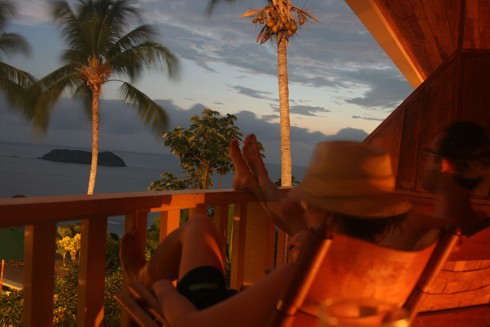
It rained steadily throughout the night and the rain lasted until just after sunrise. Though we had planned to go to the beach all day, we decided to take it easy in the morning and spend some time on our balcony where it was warm and dry. We cut up our fruit and had some of the best mango and papaya ever. The mango was so delicious; the only comparable fruit I’ve tasted were the mangoes I had on my uncle’s farm in Florida.
When you eat at 6:30 a.m., you don’t want to wait until 12:30 to have lunch, so by mid-morning I needed more food. We went back to El Patio for coffee and a muffin, having enjoyed the breakfast we had there the previous day.
We went back to the same beach as before, feeling it was the most beautiful of all the options and spotted some howler monkeys making a rukus on the way.
We left briefly to have lunch at The Marlin, hearing that you could see Squirrel monkeys there (no doubt trying to get free food), but we didn’t see any. Their fish burritos were excellent, however, and made up for the lack of wildlife-sighting. We went back to the beach, but given that the park closes at 4, we had just enough time to float a little before the park ranger blew his whistle and called everyone off the beach.
Once again, we kept watch for little raiders, whose movements you could monitor by looking down the beach to find the spot where a crowd had gathered to take pictures.
When they came to us, I also couldn’t help but get up and watch in fascination as two Capuchins settled on a low branch and started to groom one another. The one would gently stretch out the other’s leg and inspect its fur. It was amazing to see this intimate act in such plain view–it was clear these monkeys were very used to people.
Soon, iguanas, and raccoons were joining in the mix. It was a crazy morning. The difference between midweek and today (a Saturday) was very clear: many more Ticos had come to enjoy the beach and the crowd had at least doubled. As it neared lunchtime, we packed up and went back to pick up our luggage. We decided to have lunch at the fruiteria again… and this time had two batidos to stay and two to go. They were just so good!
We passed stand upon stand of fruits and baked goods, and stopped at a few. We stopped for one selling agua de pipa (we’d seen the sign so many times and had to learn what it was–turns out it means coconut water) and were especially intrigued by what we learned to be a cashew nut fruit.We also bought a package of prestiños caseros–a thin, fried flour pancake that you eat with honey or molasses.
Atenas was named as having the best climate in world by National Geographic a few years back. Most days it is in the 80s, dropping down into the 60s at night. This was a fact of which we were constantly reminded: As we drove around, trying to find a Soda recommended by our book, the Garmin kept repeating its narration, “You are now in Atenas, which was named as having the best….” In case that wasn’t enough, every bus in town is stenciled with the accolade. That night we had the prestiños caseros and more mangoes for dessert.
It was really interesting to imagine what it might be like to have a vacation home in Central America, and we were really grateful for the night’s lodging. However, while I would definitely recommend the drive through Atenas (on the old Highway 3) for its vistas as an alternative route from the coast into the Central Valley, I’m not sure the area held the same interest for visitors as some of the other areas we stayed; we did feel a bit isolated.
With our climbing in elevation, the clouds had taken over and soon enough it had started raining heavily. When we got to the park entrance, the ranger told us there was no hope of our seeing the volcano given the storm, and we that shouldn’t waste our money. Taking his advice, we turned around.
It turned out that we were on the same route as we had been on our first day; we had passed Chubascos on the way up, so we stopped there again–this time for breakfast (gallo pinto) and another strawberry shake. We also bought some strawberries from a roadside vendor–there were many along the way, selling strawberries, blackberries, and some kind of mozzarella-style cheese.
Still with plenty of time before we needed to be at the airport, we crisscrossed the mountain over to the town Sarchi, originally made famous by its citizens’ skills at painting oxcarts–and which is now a tourist mecca for furniture and craft stores, many selling the famous oxcarts in various sizes. In the nineteenth century, coffee farmers used oxen to transport their crop to the ports for export. We stopped to look around at the Chaverri Oxcart Factory, a nice place to see some historical examples of the oxcarts, as well as the factories where artisans still work. In town, you can see the world’s largest oxcart (is there a lot of competition?)–and we happened upon an interesting festival going on around it, though we’re not too sure what the display was for.



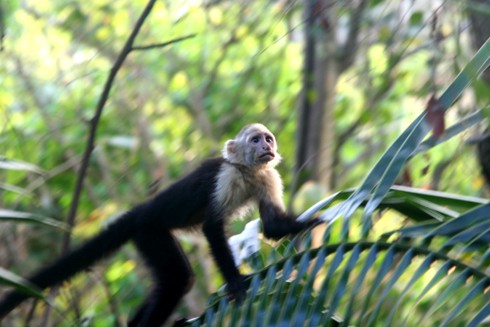




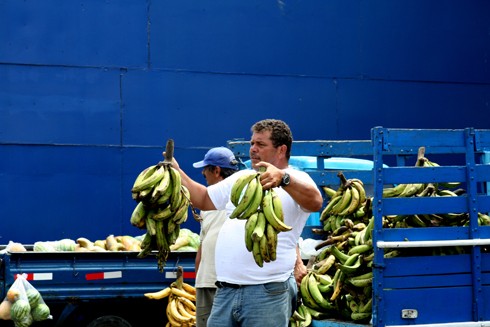
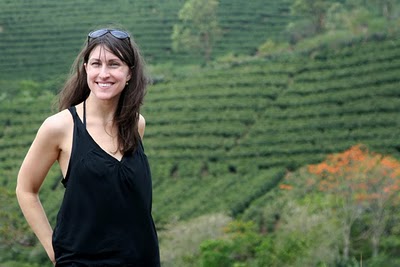








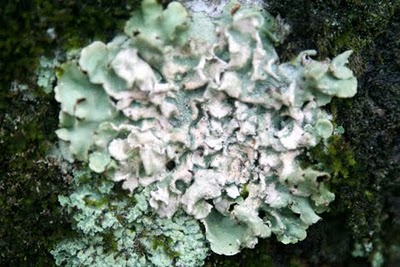
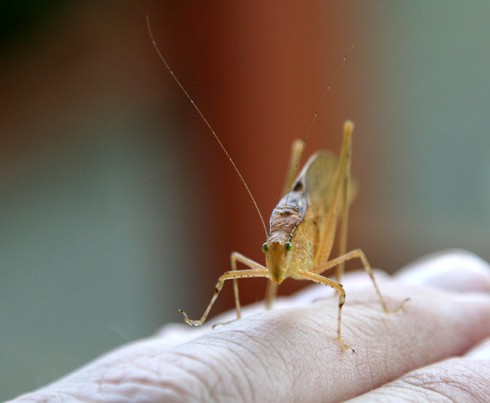

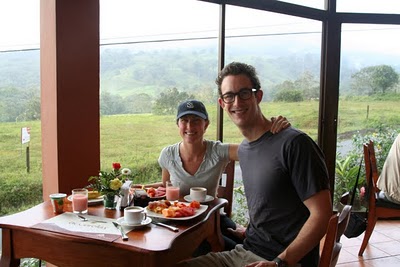







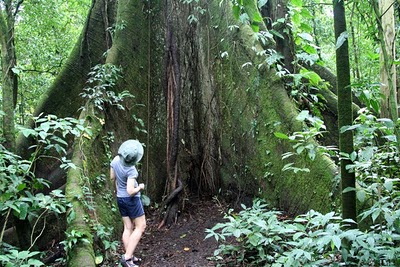

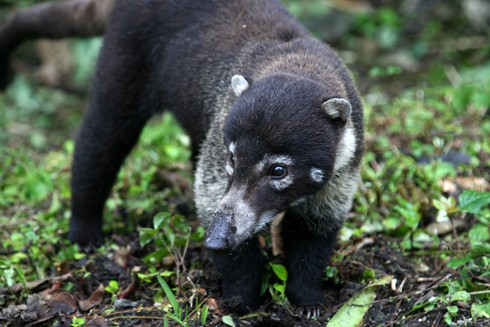
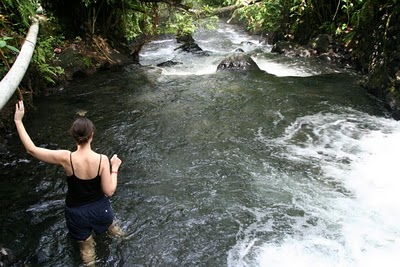



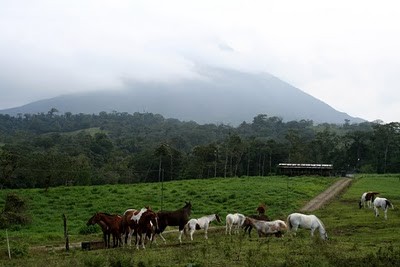



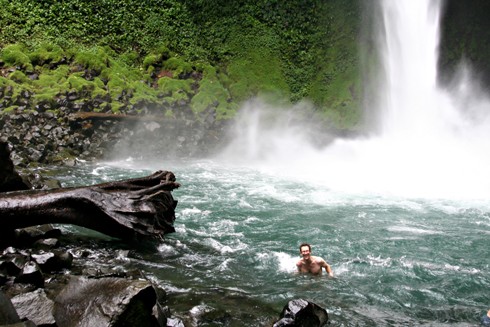




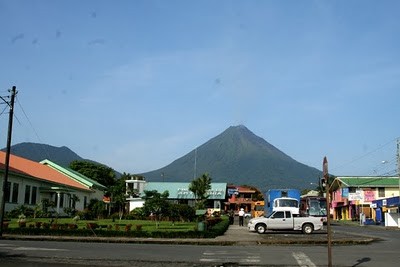
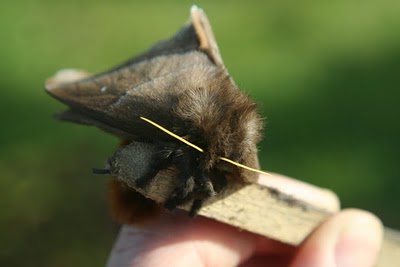
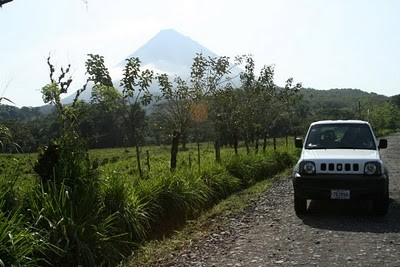
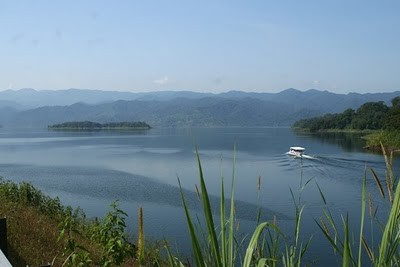
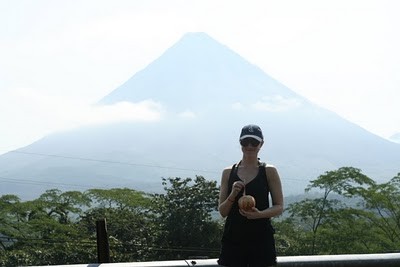
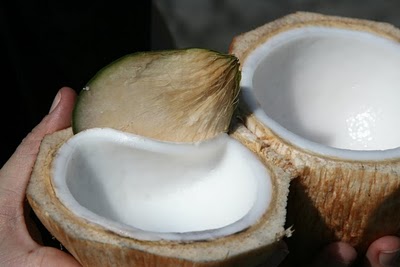
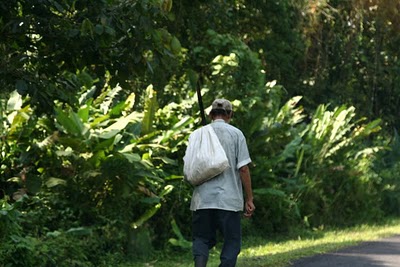
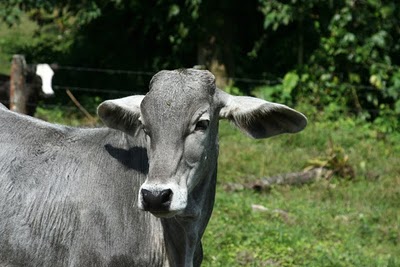
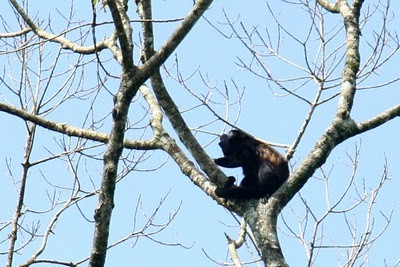
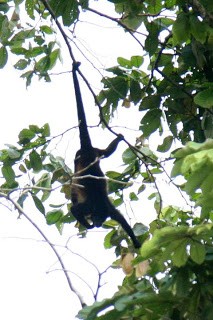
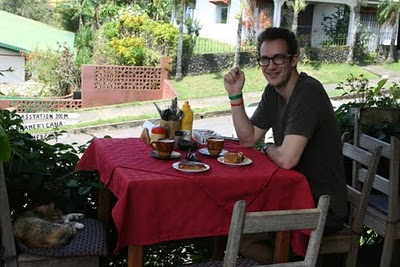
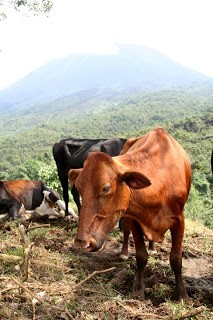
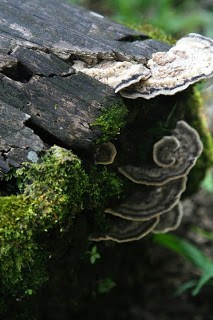
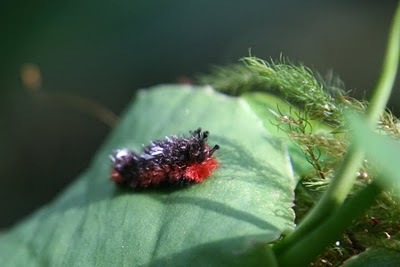
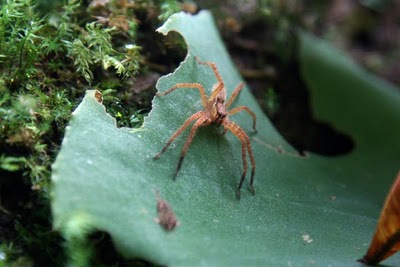
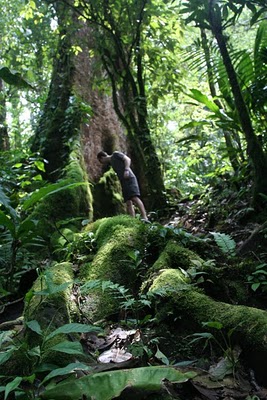

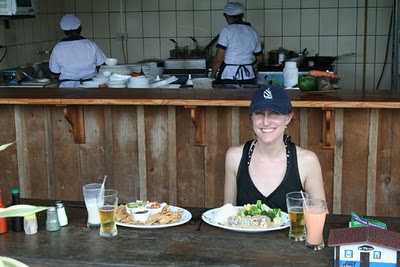
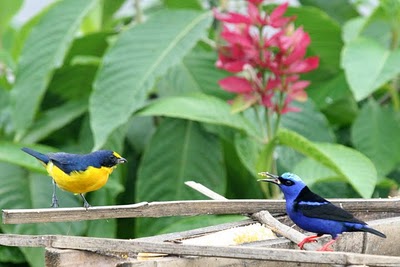
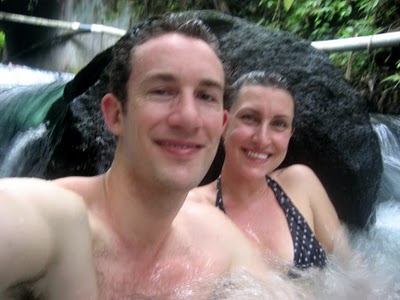

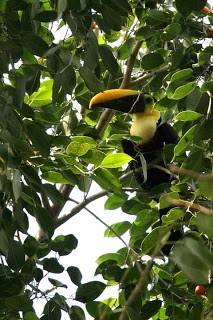

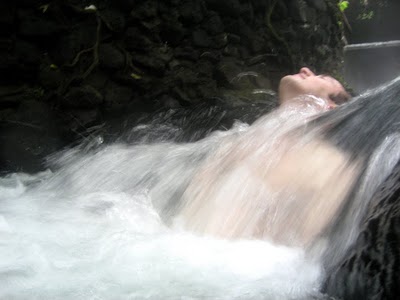
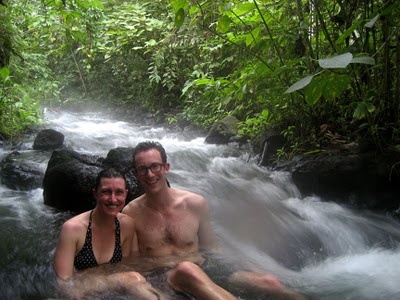
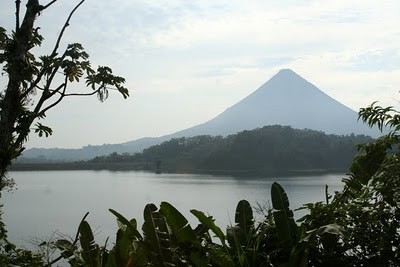
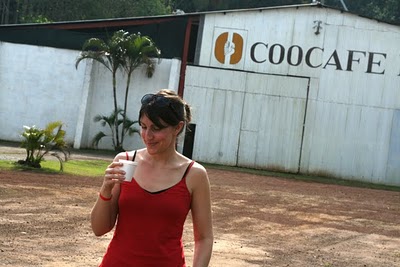
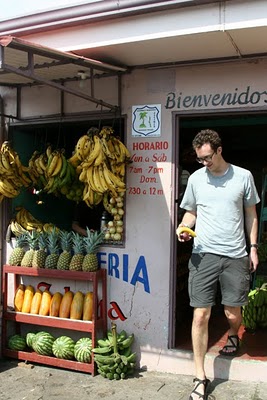
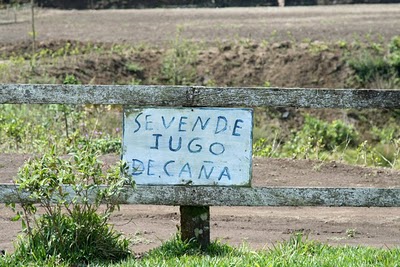
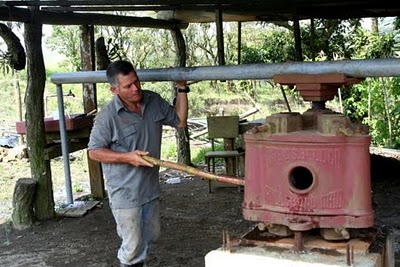
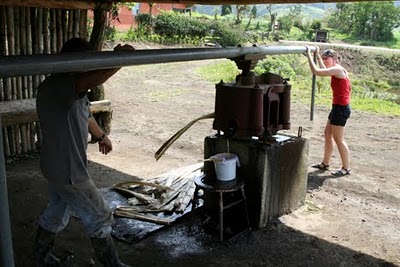
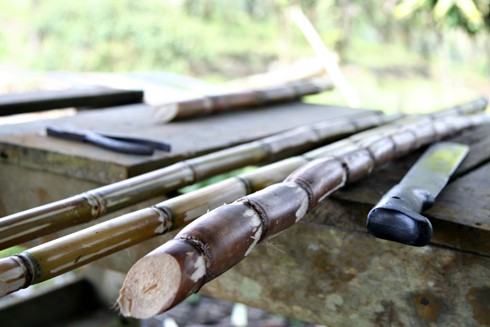
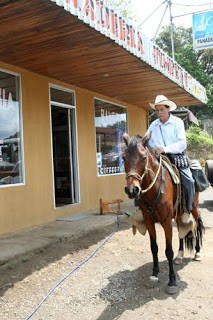
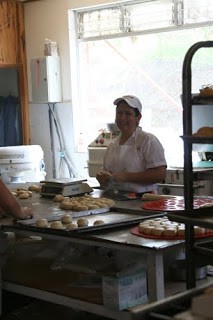
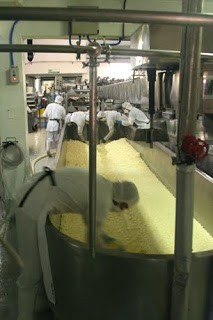
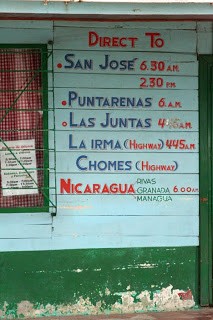
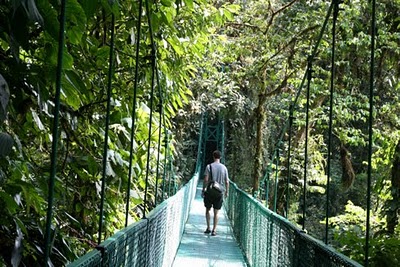
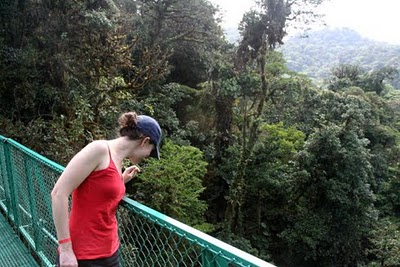
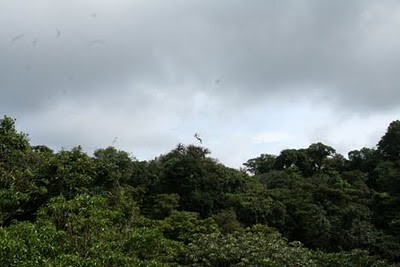
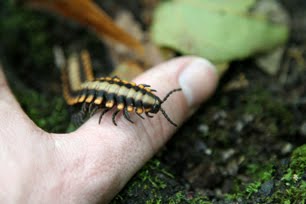
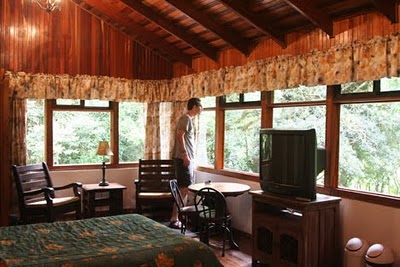
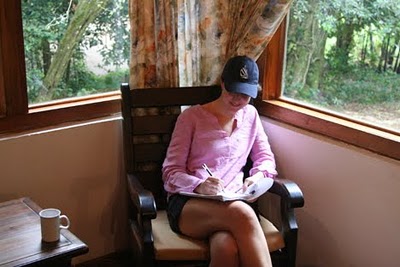
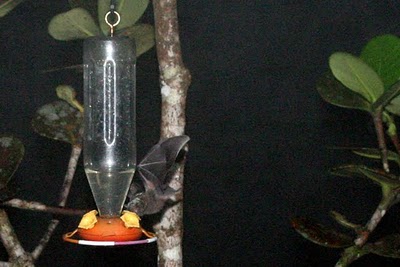
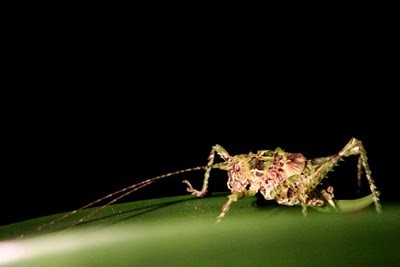
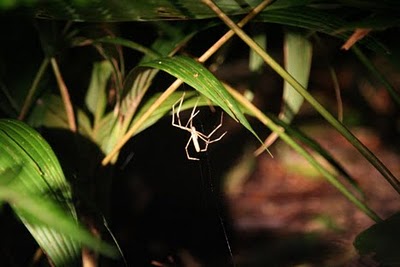
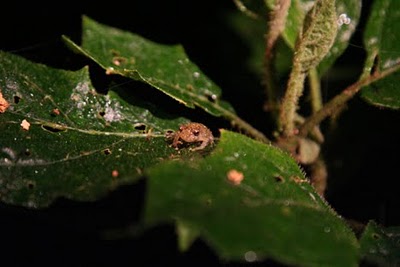
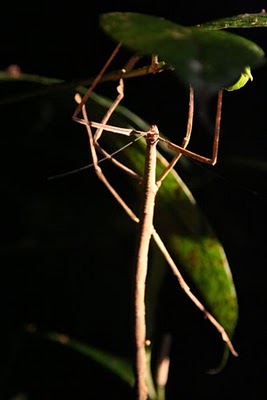
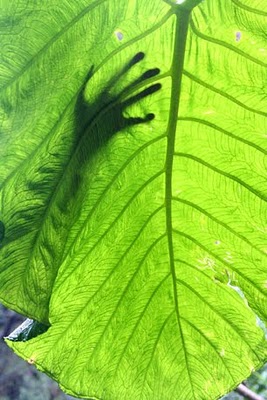
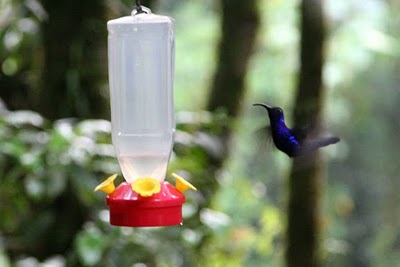

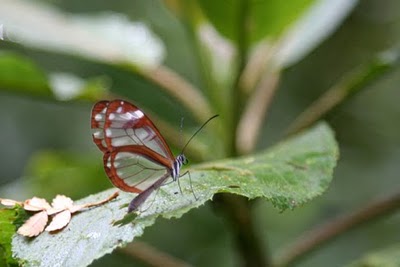
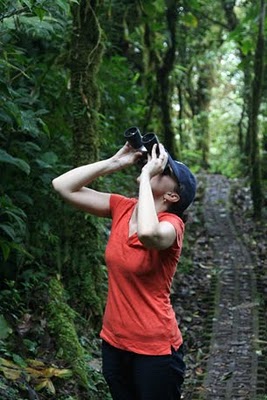
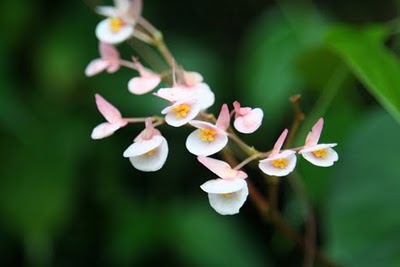
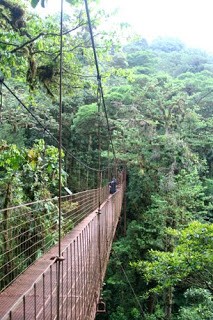
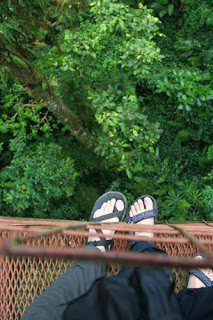
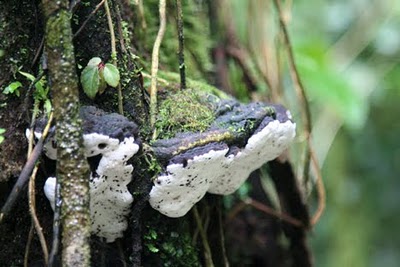

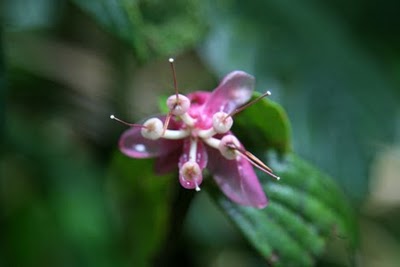
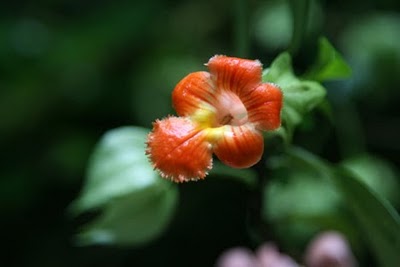
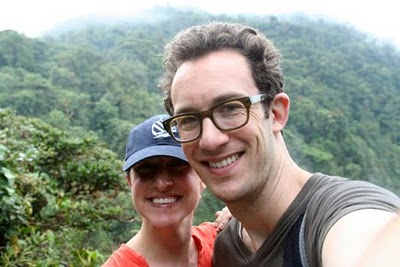
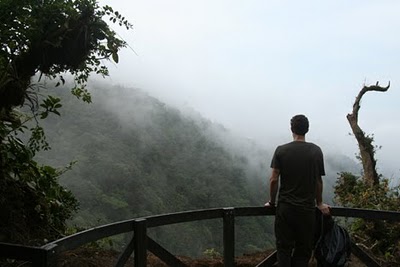
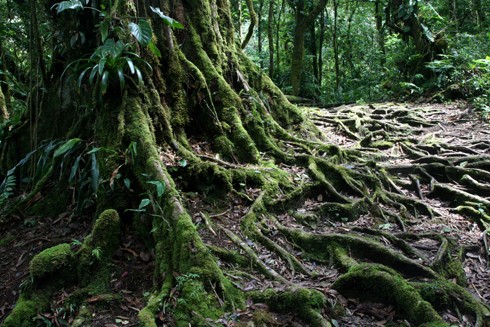
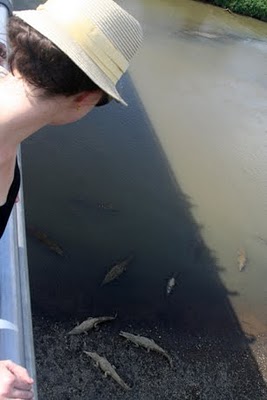
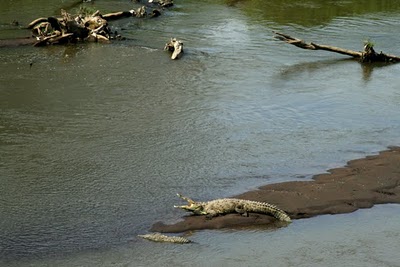
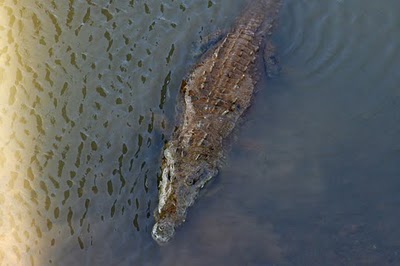
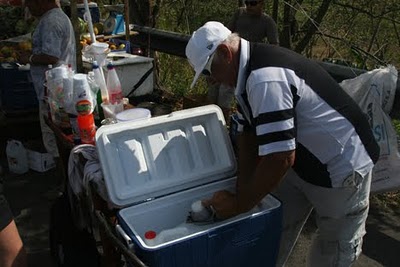
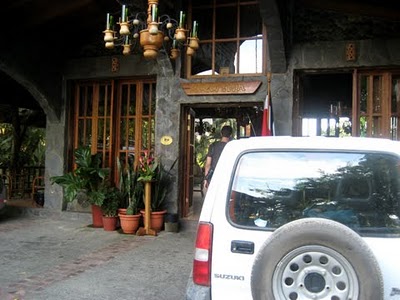




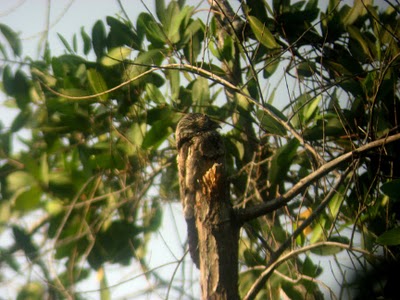

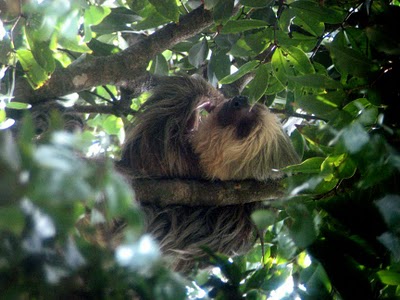
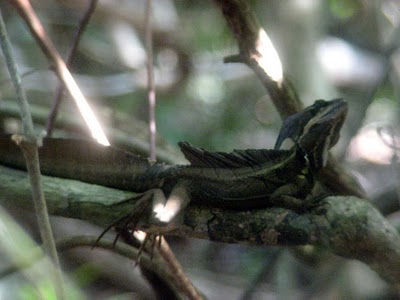

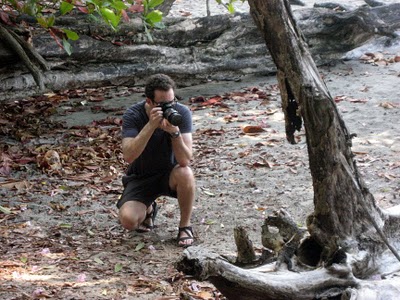
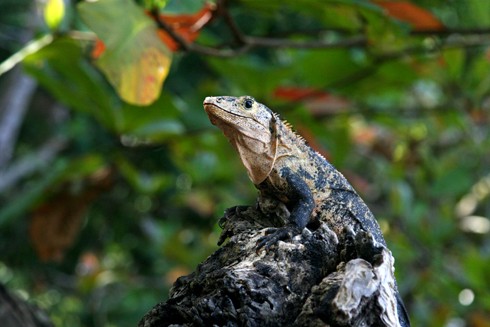





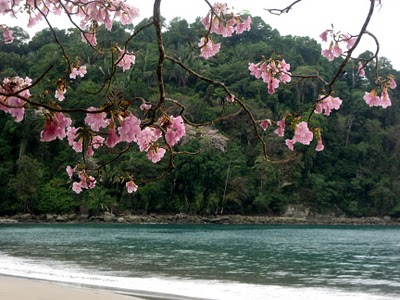






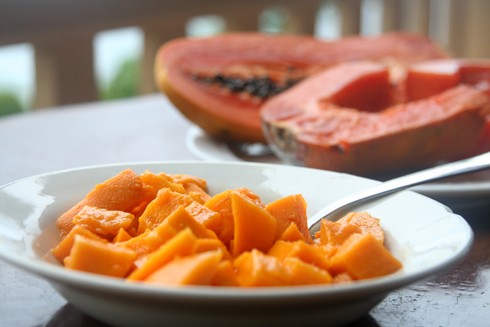




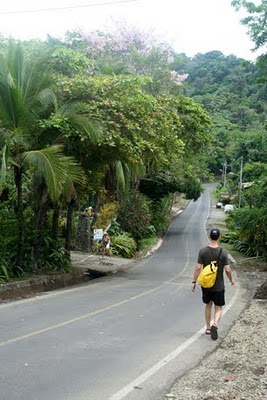




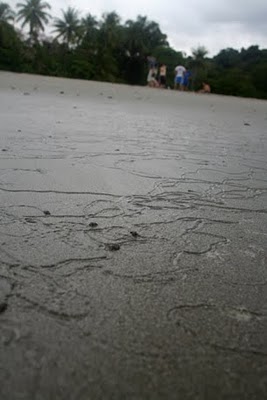
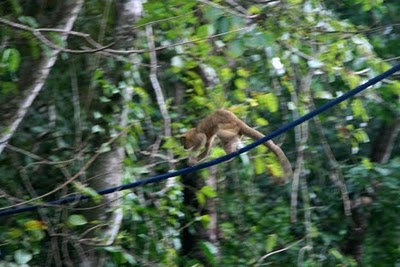






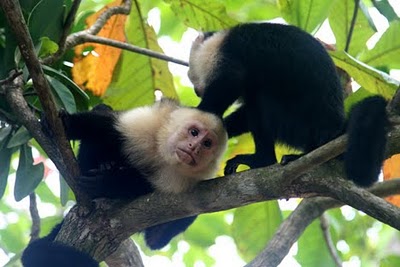

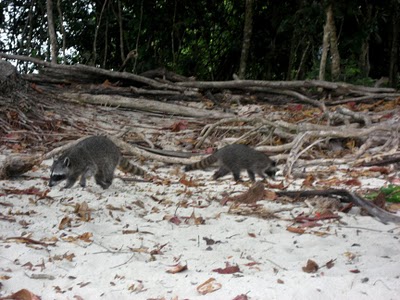




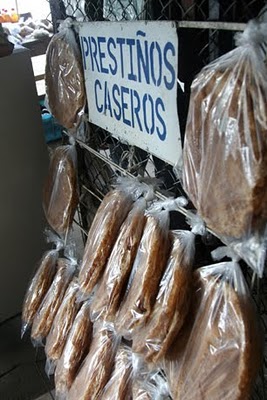
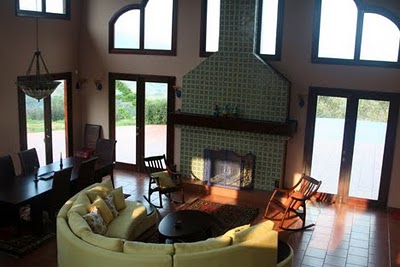

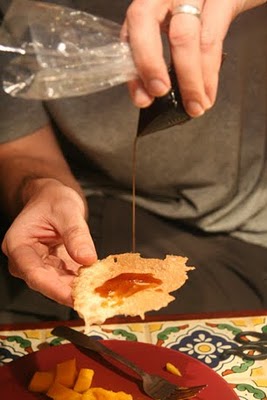












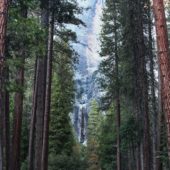
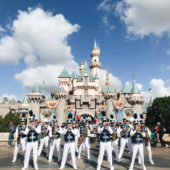
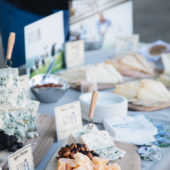









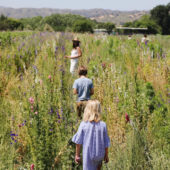

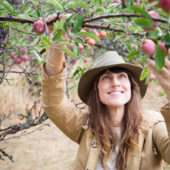



















36 Comments